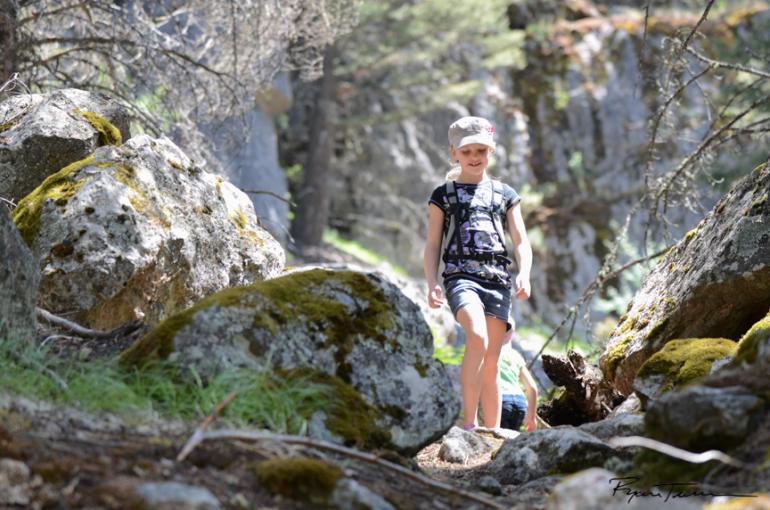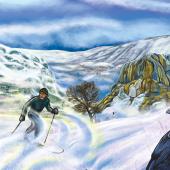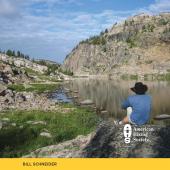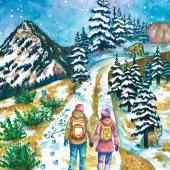Family-Style Backpacking
Life can be lighter after children.
A solo hike across Montana’s Beartooth Range is an exhilarating experience. However, the ability to share the wilderness with your spouse and children is a crown-jewel-of-life experience. Unfortunately, many families are intimidated by the prospects of taking their children into wild country and carrying the weight required to keep them safe and comfortable. Couples and families usually have five major concerns: pack weight, sleeping bags, shelters, food, and tempo.
Pack Weight
Dad’s pack should focus on volume—especially if Mom is carrying a baby on her back. Large-volume packs in the range of 70-80 liters are usually sufficient for carrying a weekend’s worth of light gear. If Mom carries her own gear and the kids are ready to walk with small packs, then Dan can reduce the volume to 50 liters or less. My favorite Dad’s pack is simple, voluminous, and has an internal frame: the Granite Gear Nimbus Ozone (granitegear.com, 3 lbs).
Kids’ backpacks should generally focus on organization, light weight, and carrying comfort. To that end, hydration and day packs in the 1,000-1,500 cubic range are ideal for five- to eight-year-olds. If your child has never backpacked and you aren’t sure how much weight she can carry, start conservatively—one pound (or less) per year of age—and adjust from there.
Kids’ packs equipped with hydration systems (platypus.com) are useful for keeping your young ones well hydrated. Also, most kids find it cool to have their own hydration bladder, complete with hose and bite valve.
Generally, count on your toddler to carry nothing more than a one-liter capacity hydration pack; your first-through-third-grade-child to carry his sleeping bag, water, and snacks; and your fourth-grader or older child to carry 1-1.5 pounds of weight per year of age.
Sleeping Bags
Two-person down quilts such as the Nunatak Dual Arc Alpinist (nunatakusa.com, 32 oz.), or unzipped rectangular bags such as the Western Mountaineering MityLite (westernmountaineering.com, 28 oz.), allow you to adequately cover yourselves, share body heat, and save terrific amounts of weight versus carrying a pair of traditional mummy bags. The biggest challenge in sharing a quilt or pair of bags zipped together is controlling drafts through the neck openings. Wear your hats to bed.
Lightweight bags for kids are few and far between. Consider synthetic bags for kids at risk of wetting their beds, such as the Integral Designs Assiniboine (integraldesigns.com, 28 oz.). Down quilts and mountaineers’ half bags can offer ultralight options that can weigh as little as a pound or less per child.
Shelters
Backpacking with your family is not the best time to travel ultralight with poncho-tarps and bivy sacks, especially in the height of bug season, or when faced with the prospects of inclement weather.
The ideal family shelter, especially for families just learning to backpack together, should be roomy, provide protection from the elements (including bugs), and be lightweight. Large three- or five-person tents from Stephenson’s (warmlite.com) provide outstanding area-to-weight ratios and are well suited for family camping. Other options include the Rainshadow TarpTent (tarptent.com) and the GoLite Hex with Nest insert for bug and additional weather protection (golite.com).
Food
Variety is key. Taking small amounts of a wide variety of foods offers a family far better insurance in keeping your kids well fed than larger volumes and less variety. Kids’ (and parents’, for that matter) taste buds can react differently when in the wilderness, as a result of a change in physiology and metabolism in response to the physical challenges of backpacking.
Tempo
New families that aren’t used to dealing with the unexpected challenges their kids will face in the backcountry should lower their expectations: fewer miles, shorter hills, and lower elevations. As you gain experience, you’ll know how much to increase the challenge of your hiking. In particular, let your family enjoy the “camping” part of backpacking as much as the “hiking” part of backpacking: build plenty of in-camp time, especially in the afternoons, for fishing, exploration, games, meals, and stargazing.
Ryan Jordan is the co-founder and publisher of Backpacking Light Magazine (backpackinglight.com). Ryan and his wife, Stephanie, have backpacked with their seven-year-old son, Chase, since he was a toddler, and have recently begun winter backpacking with Chase in the northern Rockies.












